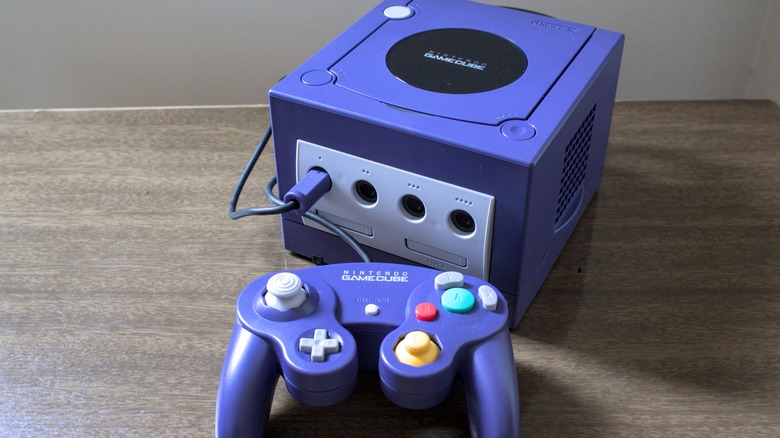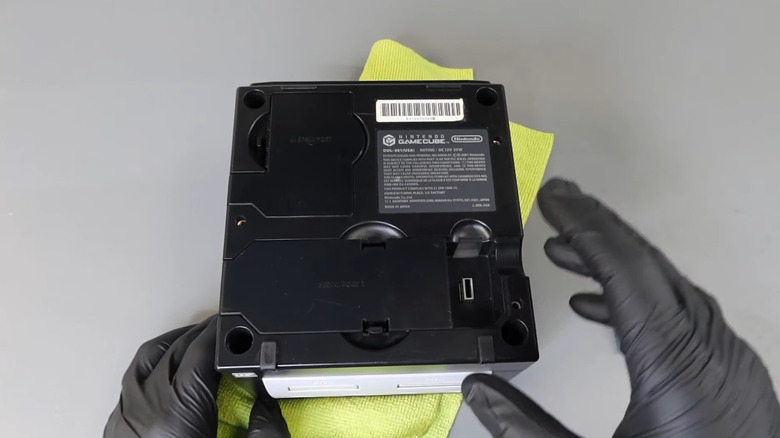
Nintendo fans often look back at past consoles that made them fall in love with Mario games. One of those nostalgic consoles is the GameCube, which came out in fall of 2001 and continued to release iconic games players still miss. However, you may have overlooked a "hidden" feature of the console -- three ports that can be found on the bottom of the GameCube. To find these ports, you to remove various paneling on the bottom of the console, meaning many gamers didn't even know they were there. However, those who
knew of the ports had access to a wide range of additional experiences with the GameCube both online and offline.
In 1999, the Sega Dreamcast paved the way for consoles with online features, allowing gamers to send emails and browse the web. Nintendo also attempted to include this functionality with the GameCube -- although it was quite limited and quickly overshadowed by the Xbox 360's Xbox Live feature in 2005. Still, there were two attachments that allowed the console to go online, either using a broadband connection or a modem connection. Both could be plugged into the first port on the bottom of the GameCube.
Once online, there were a handful of games that could utilize the internet -- "Phantasy Star Online" had a monthly subscription that would connect you with Sega's servers for $8.95 a month. Games like "Kirby Air Ride" and "Mario Kart: Double Dash" could also use the internet to connect multiple GameCubes for LAN parties. It was a pretty limited online experience, with many developers choosing not to utilize the modem for their releases, so some gamers may have never known this was there.
Read more: 7 Of The Most Useful USB Gadgets You Can Buy On Amazon
Two Additional Mystery Ports Unlock More Gaming Features

A second port on the bottom of the GameCube was meant for a very specific attachment -- the Game Boy Player. After getting plugged in, the Game Boy Player would snap onto the bottom of the GameCube -- a perfect fit. Gamers would also need a start-up disc that would go inside the GameCube as if it were any other game. With both the Game Boy Player and Game Boy start-up disc, gamers could play games from the classic handheld device on their TV. A special Game Boy Player was needed if you had the rare Panasonic Q GameCube variant.
The third port is a mystery -- Nintendo has never confirmed what it's for. Gamers have often discussed what this seemingly extra port is for, with one theory claiming that it was possibly for future add-ons and accessories that required high-speed connections -- add-ons that never happened. This could possibly explain why the third port didn't appear on newer GameCube models. Others felt it was there "just in case," but Nintendo never made use of it. With as little info out there about it as there is, you may be better off hunting down some rare GameCube games rather than trying to figure out the mystery port's functionality.
Want the latest in tech and auto trends? Subscribe to our free newsletter for the latest headlines, expert guides, and how-to tips, one email at a time.
Read the original article on SlashGear.










